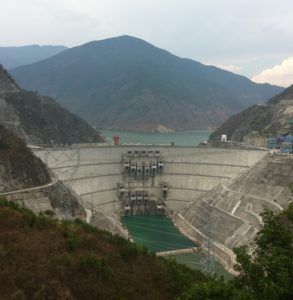Around the world, cities are facing risks that impact their residents and businesses, as well as the infrastructure, economy, environment, and social structures they rely on. Unfortunately, in many cities these risks are growing, or new risks are emerging due to climate change. Reducing these risks and developing climate resilient communities requires a multi-faceted approach that recognizes and addresses the complexities of communities, and the multiple systems that come together to make cities great places to live, learn, work, and play. Only through a focused, global initiative to create climate resilient cities can we hope to achieve a climate resilient earth.
Climate resilience is defined as, “the ability of a community to prepare, plan for and adapt to the adverse impacts of extreme weather including those caused or influenced by climate change. A climate resilient community recognizes the need for both adaptation and mitigation strategies that serve to reduce vulnerabilities and risk while reducing the emissions that drive ever increasing impacts.”
As leaders in our respective sectors of the economy, civil society, and government, we collectively agree to the following principles that will drive progress toward a climate resilient earth.
- Climate resilience is only achievable through the collective efforts of organizations and individuals that represent multiple disciplines, systems, strategies, and perspectives and recognize the power of collaboration.
- Climate resilience solutions are most effective when they recognize the interconnectedness of community functions and focus on opportunities to capture benefits and synergies across these functions.
- Climate resilience starts at the city level where impacts are most acute and where decisions have the greatest impact. Policymakers, residents, and businesses must have access to tools and other resources to facilitate progress.
- Effective and efficient climate resilience relies on the availability, accessibility, and usability of data to support decision making.
- An expansion of capital that supports resilience investments is necessary. Successful projects and lessons learned must be shared to unlock new sources of capital.
- Resilience is not a static. Cities, companies, and citizens must regularly evaluate their current state through benchmarking and use the results to inform and then implement plans for improvement.
- Nature provides multiple resilience services that should be leveraged to protect society at all levels, from local to global.
- Climate resilience policies and practices must be informed by research—particularly social science research which examines how hazards impact distinct populations and the potential strategies to address their specific needs.
- Resources are too scarce, time is too short, and the challenge is too big to rely on solutions that are not scalable, replicable, and additive for cities and countries around the globe.
- Outreach and education are essential to empowering citizens to build their resilience and engage their neighbors and policymakers; to supporting community leaders in effective decision-making; and to building a cadre of climate resilience professionals.
We will leverage our influence and expertise, both collectively and individually, to develop or support the development of tools, technologies, strategies and practices that lead to a climate resilient earth.



